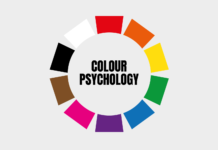Understanding Perplexity and Burstiness: An Exploration of Language Complexity
The multifaceted nature of language is an intricate and ever-evolving concept, with its complexities frequently perplexing even the most astute of linguists. Two crucial elements that determine the complexity of text are perplexity and burstiness. Perplexity refers to the level of difficulty in understanding a particular text, while burstiness measures the variation in sentence length and structure.
When examining the relationship between perplexity and burstiness, it’s important to consider how these factors impact the readability of text. Human-written text is typically characterized by a high degree of burstiness, with longer and more complex sentences often interspersed with shorter and simpler ones. This burstiness can provide readers with a diverse and engaging experience, keeping them actively engaged throughout the text.
In contrast, AI-generated text often lacks this same degree of burstiness, resulting in text that may be more uniform and less engaging. This uniformity can also contribute to a higher degree of perplexity, as the absence of variation in sentence structure can make it challenging for readers to distinguish between important and less important information.
The use of headings and subheadings of varying levels can help to mitigate the effects of high perplexity and low burstiness. Headings provide readers with a clear understanding of the content to follow, enabling them to mentally prepare and contextualize the information presented. Additionally, headings can help to create a sense of organization and flow, which can increase readability and comprehension.
The Impact of Technology on Mental Health: A Multifaceted Analysis
In today’s era of constant technological connectivity, the unrelenting influx of information and notifications can leave individuals feeling overwhelmed and inundated. While technology has provided us with numerous benefits, including greater convenience and connectivity, it has also been linked to a range of negative impacts on mental health.
Excessive use of technology, particularly social media, has been shown to exacerbate symptoms of anxiety, depression, and addiction. The perpetual connectivity offered by technological devices can exert immense pressure on individuals to be available and “on” all the time, leading to increased stress levels and eventual burnout. By unplugging and taking a tech break, individuals can hit the reset button, recharge, and reduce feelings of overwhelm.
Moreover, technology can negatively impact productivity levels, with constant notifications and distractions undermining an individual’s ability to focus on tasks at hand. Research has shown that frequent interruptions can significantly decrease productivity levels, as it takes time to refocus and regain momentum after each interruption. Taking a tech break can help individuals eliminate these distracting elements and create an environment that fosters undivided attention and uninterrupted focus.
While technology can be a valuable tool for connecting with others, it can also curtail our engagement in meaningful conversations and hinder our ability to spend quality time with loved ones. By unplugging and disconnecting from technology, individuals can create a space that nurtures deeper connections and fosters meaningful interactions, culminating in a positive impact on mental health and overall well-being.
The Benefits of Taking a Tech Break: A Multifaceted Exploration
The benefits of taking a tech break are numerous and far-reaching. One of the primary advantages of disconnecting from technology is its positive impact on mental health. By reducing feelings of overwhelm and allowing individuals to recharge, taking a tech break can help alleviate symptoms of anxiety, depression, and addiction.
In addition to the benefits for mental health, taking a tech break can also positively impact productivity levels. By eliminating distractions and creating an environment that fosters undivided attention and uninterrupted focus, individuals can approach work and tasks with renewed energy and concentration.
The Impact of Technology on Social Relationships: A Comprehensive Analysis
In today’s world, technology has drastically altered the way we interact with others, blurring the lines between physical and digital relationships. While technology has provided us with a myriad of opportunities to connect with individuals from all over the world, it has also had a profound impact on our social relationships and interactions.
One of the most significant impacts of technology on social relationships is the development of a culture of instant gratification. With the constant availability of communication and social media platforms, individuals have grown accustomed to receiving immediate responses and instant gratification. This has led to a decline in patience and a decrease in the willingness to invest time and effort into building meaningful relationships.
Furthermore, technology has also led to the development of a superficial form of communication, with individuals often relying on emojis and abbreviated words rather than fully expressing themselves. This can result in a lack of emotional connection and a decline in the ability to understand and empathize with others.
Another impact of technology on social relationships is the paradox of choice. With an endless array of options for communication and social media platforms, individuals may find themselves overwhelmed and unsure of where to invest their time and energy. This can lead to a lack of commitment and a decline in the quality of relationships.
However, it’s important to acknowledge that technology can also have a positive impact on social relationships. Social media platforms and communication technologies have made it easier than ever to connect with individuals from all over the world, strengthening existing relationships and creating new ones. Additionally, technology has made it possible for individuals to maintain relationships despite distance and time differences, fostering a sense of community and support.
In conclusion, technology has had a profound impact on our social relationships and interactions. While it has provided us with numerous opportunities to connect with others, it has also had negative effects on the quality and depth of our relationships. By recognizing the impact of technology on social relationships and taking proactive steps to build meaningful connections, we can optimize the benefits of technology while mitigating its potential drawbacks.
Conclusion
In this age of constant connectivity and digital overload, taking a tech break is more crucial than ever before. By disconnecting from technology, individuals can improve their mental health, productivity, and social relationships, leading to a more balanced and wholesome approach to technology usage.
However, taking a tech break can be challenging, given the pervasiveness of technology in our daily lives. By setting achievable goals, creating a meticulous plan, and finding stimulating alternatives to technology, individuals can successfully disconnect and reap the benefits.
In conclusion, the impact of technology on our lives is complex and multifaceted. While it has provided us with numerous opportunities to connect and communicate, it has also had detrimental effects on our mental health, productivity, and social relationships. By finding a balance between technology use and taking a break, individuals can optimize their well-being and productivity, leading to a more fulfilling and meaningful life.
Google News | Telegram















